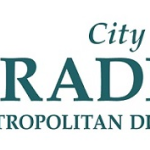The COVID-19 pandemic has seen a dramatic increase in the number of businesses adopting thermal imaging technology to quickly test whether or not someone has a fever. But as we move past the first peak, is there a long-term need for businesses to use thermal screening technology? Here, Lasse Tonnesen, Managing Director at Test Meter Group, explains how we should prepare for the ‘new normal’, and avoid relaxing safety measures too quickly.
Workplaces and public spaces and buildings up and down the country have been largely proactive in introducing a range of safety measures to protect against COVID-19 infection. From increased use of sanitary products, to enhanced sign in processes, temperature checks and re-routing footfall traffic to reduce dwell time. It’s fair to say many of these can be quite obstructive, for example, delaying entry into a building. As such, as the threat from COVID retreats, we are also likely to see a gradual relaxation of some of these measures. However, when it comes to fever screening – a largely unobtrusive safety measure – this technology is likely to remain, as it carries many benefits, both in the context of COVID, and wider.
The new normal: protecting against a second wave
Fever screening could have an important role to play in battling a “second wave” of COVID-19, and indeed any future flair ups in the months or years to come. With a fever being one of the most common symptoms of Coronavirus, implementing technology which can instantly detect abnormal temperatures will be crucial in early identification and isolation of any customer or employee who may unknowingly have Coronavirus.
Thermal imaging solutions use AI face detection to automatically check an individual’s temperature. If the imager detects an abnormal temperature, it emits an automatic alert, which allows for a rapid on-site identification and prevention of the person from entering the premises, therefore preventing the spread of a second wave. And even as the general public relax, and the perceived or actual threat is reduced, fever screening can remain active, as an ‘always on’ precaution.
Not just COVID – limiting the spread of flu
Fever screening can be used not only for preventing the spread of Coronavirus, but for protecting against the annual flu season too. Each year many workers contract the flu, resulting in time off sick and huge productivity losses. However, workers also risk spreading the virus to other employees throughout the company during the initial onset of symptoms, when they might still be working, meaning early identification is key to avoid an outbreak amongst staff.
Limiting the spread of flu will also be more crucial in 2020 than ever before, to ease the pressure on the NHS, should there be another wave of COVID-19 during the winter.
Safety measures for large events
As social distancing measures are eased and large events become increasingly frequent, attendees are becoming increasingly used to enhanced safety measures. However, while many of these are currently quite intrusive or obstructive, one that is likely to remain for years to come is fever screening, which provides a ‘light touch’ health and safety measure to minimise risk to attendees.
Thermal imaging solutions such as FOTRIC 226B can provide mass screening, with the ability to scan up to 40 people every minute. This rapid scanning means thermal imaging cameras provide a great additional health and safety measure, without affecting footfall or slowing admission to events. The instant alarm also means that any attendee that exhibits the potential symptom of illness can be prevented from entering the event at all, therefore protecting other guests.
More information on FOTRIC 226B can be found here.







